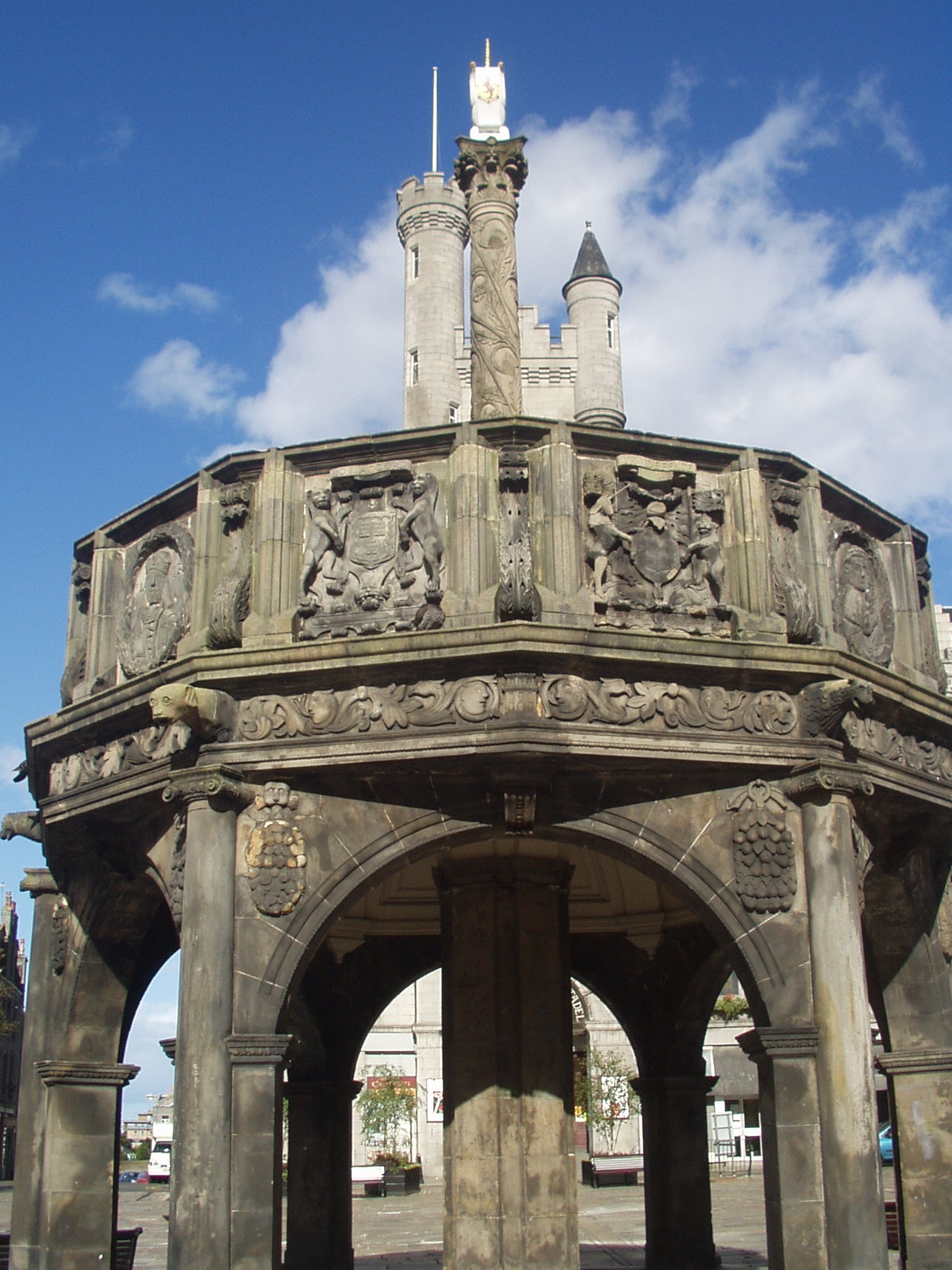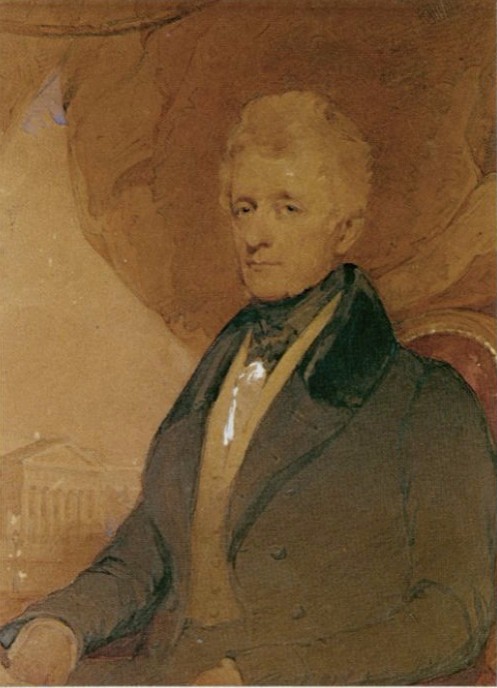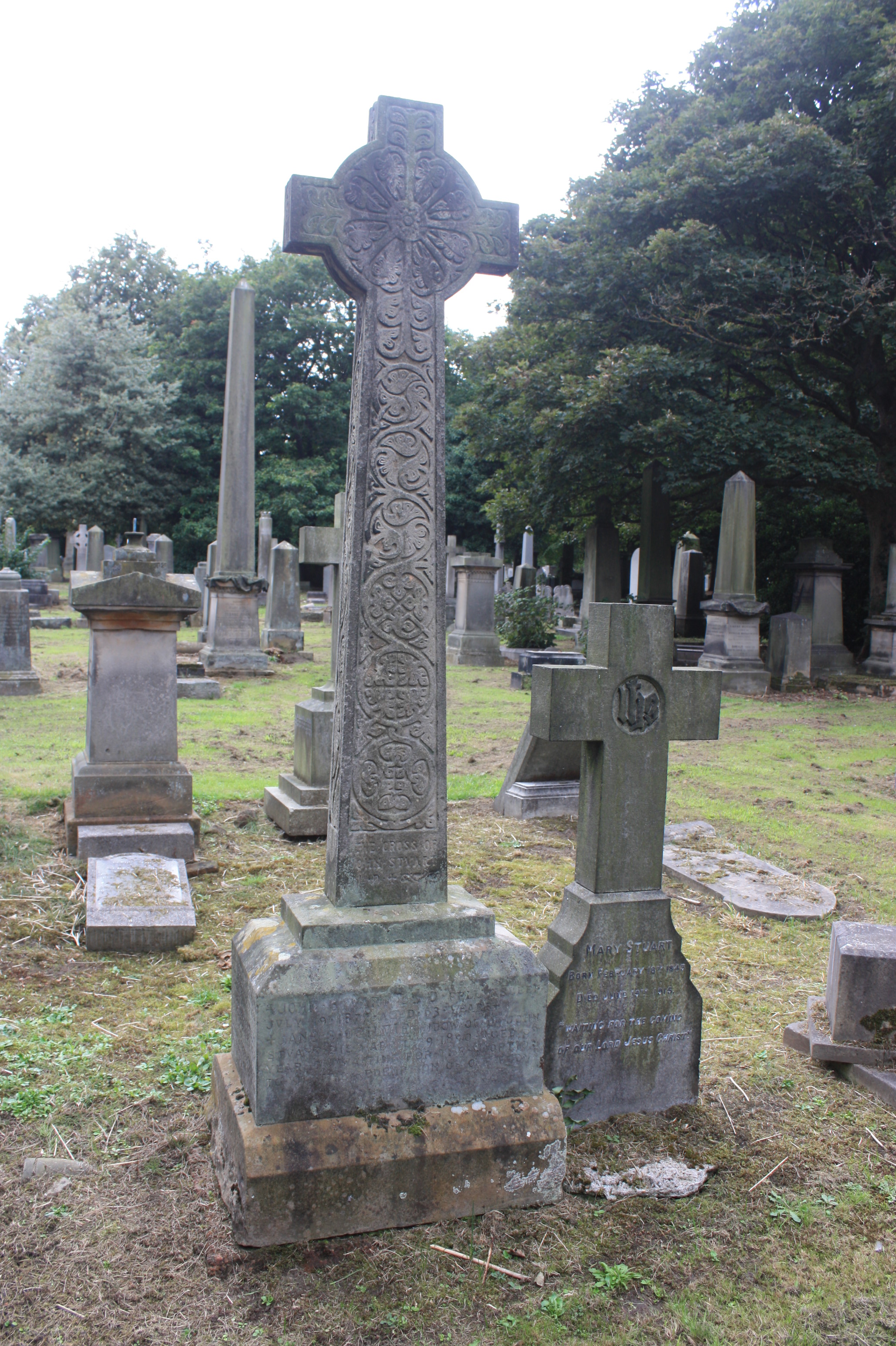|
John Spalding (historian)
John Spalding (''Floruit, fl.'' 1650) was a Scottish historian, possibly a native of Aberdeen. The name was uncommon there in the sixteenth and seventeenth centuries, but the registers for History of Aberdeen, New Aberdeen record the marriage of "Alexander Spalding and Cristine Hervie" (i.e. Herries) on 7 Feb. 1608. John Spalding became a lawyer, and resided in the 'Old town, Aberdeen'. For many years he acted as clerk to the consistorial court for the diocese; and his office, the records of which were burnt in 1721, was within the precincts of the St Machar's Cathedral, old cathedral of St. Machar. The latest trace of him occurs in a notarial document in his own handwriting, dated 30 Jan. 1663, whereby David Mitchel, David, bishop of Aberdeen, acknowledges to have received from Robert Forbes of Glastermuir 25l. 7s. 4d. as feu duty for these lands from Martinmas to Whitsun 1661 and 1662. Spalding was the author of a valuable annalistic ''History of the Troubles and Memorable Tran ... [...More Info...] [...Related Items...] OR: [Wikipedia] [Google] [Baidu] |
Floruit
''Floruit'' (; abbreviated fl. or occasionally flor.; from Latin for "they flourished") denotes a date or period during which a person was known to have been alive or active. In English, the unabbreviated word may also be used as a noun indicating the time when someone flourished. Etymology and use la, flōruit is the third-person singular perfect active indicative of the Latin verb ', ' "to bloom, flower, or flourish", from the noun ', ', "flower". Broadly, the term is employed in reference to the peak of activity for a person or movement. More specifically, it often is used in genealogy and historical writing when a person's birth or death dates are unknown, but some other evidence exists that indicates when they were alive. For example, if there are wills attested by John Jones in 1204, and 1229, and a record of his marriage in 1197, a record concerning him might be written as "John Jones (fl. 1197–1229)". The term is often used in art history when dating the career ... [...More Info...] [...Related Items...] OR: [Wikipedia] [Google] [Baidu] |
Aberdeen
Aberdeen (; sco, Aiberdeen ; gd, Obar Dheathain ; la, Aberdonia) is a city in North East Scotland, and is the third most populous city in the country. Aberdeen is one of Scotland's 32 local government council areas (as Aberdeen City), and has a population estimate of for the city of Aberdeen, and for the local council area making it the United Kingdom's 39th most populous built-up area. The city is northeast of Edinburgh and north of London, and is the northernmost major city in the United Kingdom. Aberdeen has a long, sandy coastline and features an oceanic climate, with cool summers and mild, rainy winters. During the mid-18th to mid-20th centuries, Aberdeen's buildings incorporated locally quarried grey granite, which may sparkle like silver because of its high mica content. Since the discovery of North Sea oil in 1969, Aberdeen has been known as the offshore oil capital of Europe. Based upon the discovery of prehistoric villages around the mouths of the rivers ... [...More Info...] [...Related Items...] OR: [Wikipedia] [Google] [Baidu] |
History Of Aberdeen
There has been a human presence in the area of Aberdeen since the Stone Age. Aberdeen as a city, grew up as two separate burghs: Old Aberdeen, the university and cathedral settlement, at the mouth of the River Don; and New Aberdeen, a fishing and trading settlement where the Denburn entered the Dee estuary. Pre-1136 Aberdeen was first settled by hunter-gatherers around 6000 BC, who established themselves around the mouths of the river Dee and river Don. Around 2000 BC the Beaker People, who built the mysterious stone circles that can be found in the Aberdeenshire area, arrived from the Rhine lands. 400 BC saw Celtic migration to the area from the north of Scotland. The Romans arrived in Aberdeenshire in the first century AD. Agricola, the Roman governor of Britannia, led a force of some 40,000 men into Caledonia in 84 AD. They fought and defeated the united armies of the Picts in the Battle of Mons Graupius, near the peak of Bennachie in Aberdeenshire. After the Romans lef ... [...More Info...] [...Related Items...] OR: [Wikipedia] [Google] [Baidu] |
St Machar's Cathedral
St Machar's Cathedral usually called Old Machar (Scottish Gaelic: Cathair-eaglais Naomh Machar), (or, more formally, the Cathedral Church of St Machar) is a Church of Scotland church in Aberdeen, Scotland. It is located to the north of the city centre, in the former burgh of Old Aberdeen. Technically, St Machar's is no longer a cathedral but rather a high kirk, as it has not been the seat of a bishop of the Catholic Church in Scotland or the Scottish Episcopal Church since 1690. History St Machar is said to have been a companion of St Columba on his journey to Iona. A fourteenth-century legend tells how God (or St Columba) told Machar to establish a church where a river bends into the shape of a bishop's crosier before flowing into the sea. The River Don bends in this way just below where the cathedral now stands. According to legend, St Machar founded a site of worship in Old Aberdeen in about 580. Machar's church was superseded by a Norman cathedral in 1131, short ... [...More Info...] [...Related Items...] OR: [Wikipedia] [Google] [Baidu] |
David Mitchel
Bishop David Mitchel, Mitchell or Mitchelson (c.1591–1663) was a Scottish clergyman. Life Born in the Mearns, he was the son of a farmer in Garvock parish. He gained an MA degree from St Andrews University and became minister in his home parish of Garvock (east of Laurencekirk) before translating to "second charge" of the Old Kirk, St Giles in Edinburgh in 1628, moving to "first charge" in 1634. At that time St Giles was split into four parishes, each served by a first charge and second charge minister – eight in total, all under a single Dean.''Fasti Ecclesiae Scoticanae''; vol. 7; by Hew Scott He held the position until he was deposed by the General Assembly for teaching Arminianism in 1638, after which he moved to England. While there he obtained a benefice, and in 1661, after the Restoration, he obtained a doctorate from the University of Oxford. In this period he became a prebendary of Westminster. Upon the restoration of Episcopacy in Scotland, he was made Bish ... [...More Info...] [...Related Items...] OR: [Wikipedia] [Google] [Baidu] |
Annalist
Annalists (from Latin ''annus'', year; hence ''annales'', sc. ''libri'', annual records), were a class of writers on Roman history, the period of whose literary activity lasted from the time of the Second Punic War to that of Sulla. They wrote the history of Rome from the earliest times (in most cases) down to their own days, the events of which were treated in much greater detail. This cites: * C. W. Nitzsch, ''Die römische Annalistik'' (1873) * H. Peter, ''Zur Kritik der Quellen der alteren romischen Geschichte'' (1879) * L. O. Brocker, ''Moderne Quellenforscher und antike Geschichtschreiber'' (1882) * Fragments in H. Peter, ''Historicorum Romanorum Reliquiae'' (1870, 1906), and ''Historicorum Romanorum Fragmenta'' (1883); * Pauly-Wissowa, '' Realencyclopädie'', art. "Annales" * The histories of Roman Literature by Martin Schanz and Teuffel-Schwabe * Mommsen, ''Hist. of Rome'' (Eng. tr.), bk. ii. ch. 9, bk. iii. ch. 14, bk. iv. ch. 13, bk. v. ch. 12 * C. Wachsmuth, ''Einl ... [...More Info...] [...Related Items...] OR: [Wikipedia] [Google] [Baidu] |
John Urry (soldier)
Sir John Urry, also known as Hurry, was a Scottish professional soldier who at various times during the Wars of the Three Kingdoms fought for Scots Covenanters, Engagers and Royalists, as well as both English Parliamentarians and Royalists. Captured at Carbisdale in April 1650, he was executed in Edinburgh on 29 May 1650. Personal details John Urry was the son of John Urry of Pitfichie near Monymusk, Aberdeenshire, and his wife, Mariora Cameraria or Marian Chamberlain, of Coullie. He had a brother, Sir William Urry, whose son John was a noted literary editor. Career Like many Scots of his generation, Urry began his military career in the Thirty Years War, probably with the Swedish army in Germany. He returned home to take part in the 1639 and 1640 Bishops' Wars and was appointed Lieutenant-Colonel of a Covenanter regiment. The Church of Scotland or kirk was a symbol of Scottish independence and like many others, his motives appear to have been primarily patriotic rat ... [...More Info...] [...Related Items...] OR: [Wikipedia] [Google] [Baidu] |
William Baillie (soldier)
General William Baillie (–1653) was a Scottish professional soldier who fought for the Dutch and later commanded a regiment under Gustavus Adolphus in Sweden. Previously having seen service in the Scots-Dutch brigade, he joined the Scottish regiment of Colonel Alexander Hamilton in Sweden before going on to command a German regiment. Records of his service in the Swedish army fade out after 1633. He returned to Scotland in 1639. He served with the Army of the Covenant in 1639 at Duns Law with the rank of colonel. Early life Baillie was the illegitimate son of Sir William Baillie of Lamington in Lanarkshire and of a "Mrs. Home;" at the time of Baillie's birth, his father was married to Margaret Maxwell, Countess of Angus. After the Countess of Angus's death, Baillie's father married Mrs. Home in an unsuccessful attempt to legitimize Baillie's birth. Military career William Baillie was a Scottish officer who served as the lieutenant colonel of Alexander Hamilton's regiment f ... [...More Info...] [...Related Items...] OR: [Wikipedia] [Google] [Baidu] |
Bannatyne Club
The Bannatyne Club, named in honour of George Bannatyne and his famous anthology of Scots literature the Bannatyne Manuscript, was a text publication society founded by Sir Walter Scott to print rare works of Scottish interest, whether in history, poetry, or general literature. The club was established in 1823 and printed 116 volumes before being dissolved in 1861. Membership Membership in the Bannatyne Club was much more diverse than that found in more elite clubs such as the Roxburghe Club, including members from the publishing and printing trades in addition to lawyers. While the club was still elite, contributions by amateurs was considered valuable. This made the Bannaytne club a transitional organization between the elitism of previous clubs and the open policy of its successors. Like many Gentlemen's club's of the 18th and 19th centuries, the Bannatyne Club allowed members engage in homosocial relations and escape from constrictions associated with class, gender, and race. ... [...More Info...] [...Related Items...] OR: [Wikipedia] [Google] [Baidu] |
James Skene
James Skene of Rubislaw (1775–1864) was a Scottish lawyer and amateur artist, best known as a friend of Sir Walter Scott. Life The second son of George Skene (1736–1776) of Rubislaw, Aberdeen and his wife Jane (Jean) Moir of Stoneywood, he was born at Rubislaw, Aberdeen on 7 March 1775. In 1783 Jane, George Skene’s widow, moved to Edinburgh for the education of her seven children. James Skene attended Edinburgh high school. An elder brother died in 1791, and James became heir of Rubislaw. At 21 he went to Germany as a student, and, returning to Edinburgh, was admitted to the Scottish bar as an advocate in 1797. His friendship with Sir Walter Scott was built on his knowledge of German literature. In 1797 Skene became cornet of the Edinburgh Light Horse, the regiment largely organised by Scott, who was himself its quartermaster, secretary, and paymaster. In 1802 Skene revisited the continent of Europe, for a time in company with George Bellas Greenough; and he became a me ... [...More Info...] [...Related Items...] OR: [Wikipedia] [Google] [Baidu] |
John Stuart (genealogist)
John Stuart LLD (1813–1877) was a Scottish genealogist. Life Stuart was born in November 1813 at Forgue, Aberdeenshire, where his father had a small farm. He was educated at Aberdeen University, and in 1836 became a member of the Aberdeen Society of Advocates. In 1853 he was appointed one of the official searchers of records in the Register House, Edinburgh, and in 1873 became principal keeper of the register of deeds. In 1854 he was appointed secretary of the Society of Antiquaries of Scotland, and was central to its operation. In 1839, along with Joseph Robertson (1810–1866) and Cosmo Innes, he joined the 'Spalding Club,' of which he acted as secretary till the close of its operations in 1870. Of the thirty-eight quarto volumes issued by the club, fourteen were produced under Stuart's editorship. Prominent among these were the two large folios on ''The Sculptured Stones of Scotland,'' published in 1856 and 1867, and regarded by antiquarians as one of their most important ... [...More Info...] [...Related Items...] OR: [Wikipedia] [Google] [Baidu] |
Spalding Club
The Spalding Club was the name of three successive antiquarian and text publication societies founded in Aberdeen, which published scholarly editions of texts and archaeological studies relevant to the history of Aberdeenshire and its region. The clubs were named after the 17th-century historian John Spalding. First club The original club was founded by Joseph Robertson (1810–1866) in 1839, and included among its members Cosmo Innes and John Stuart. Stuart served as secretary and was editor of many of the works published. Thirty-eight quarto volumes appeared in the club's main numbered series, as well as another six volumes uniform with but not part of that series. Seventeen of these volumes were edited by John Stuart: his more important works included ''Sculptured Stones of Scotland'' (1856 and 1867), a highly valued work of antiquarian reference; and '' The Book of Deer'' (1869), an edition of an important manuscript Gospel Book held at one time at the abbey of Deer. The cl ... [...More Info...] [...Related Items...] OR: [Wikipedia] [Google] [Baidu] |




